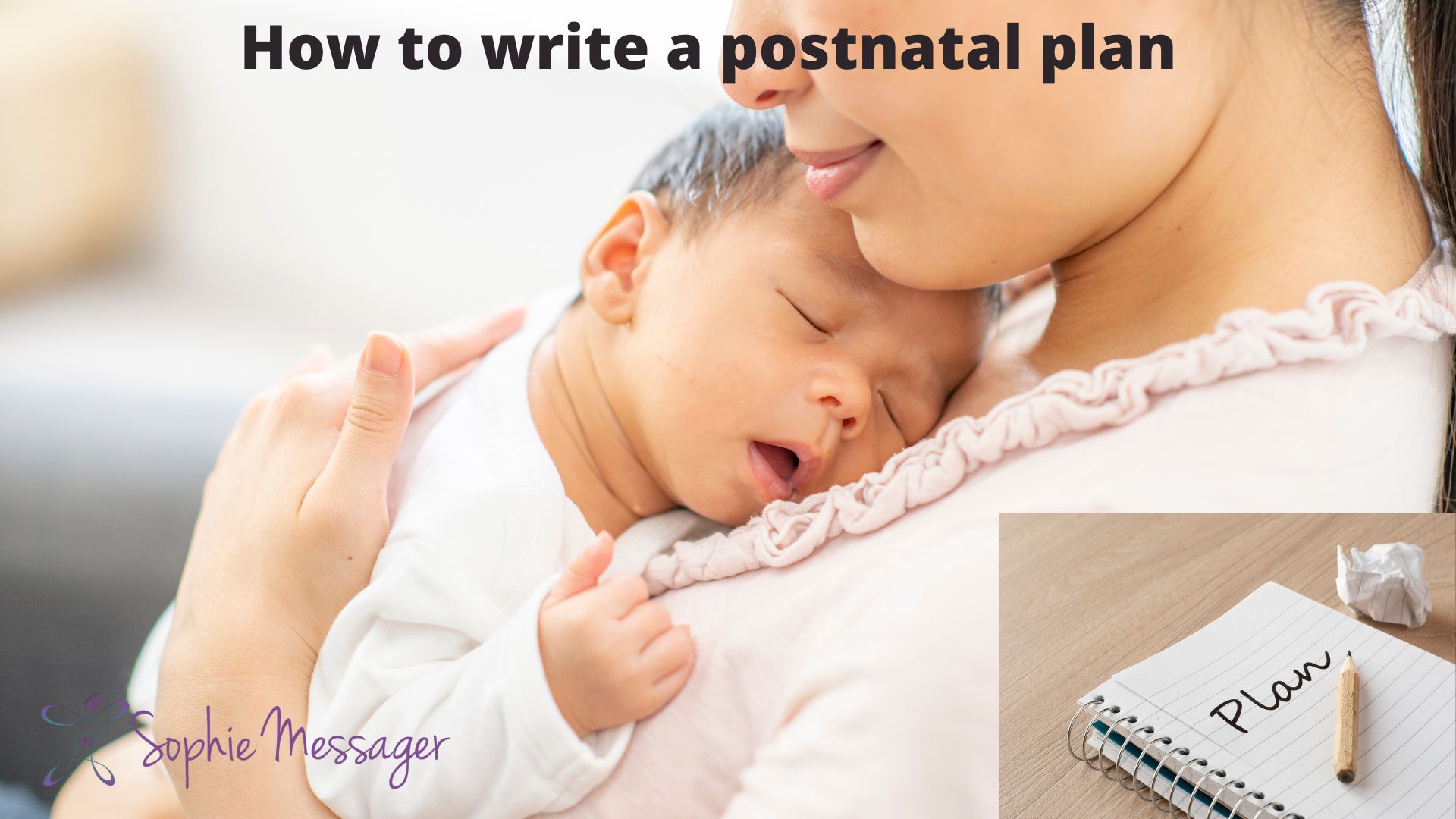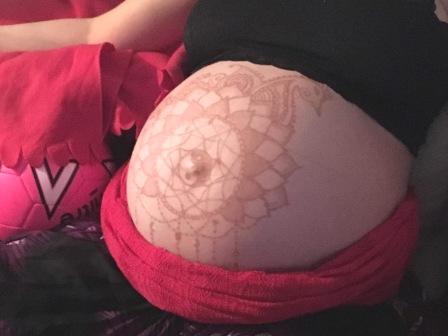Introduction
For centuries, birthing women around the world have been supported through labour using traditional techniques that modern obstetrics is only beginning to rediscover. Among these, the rebozo—a traditional Mexican shawl—is one of the most versatile and effective tools for supporting physiological birth. As rates of medical interventions continue to rise globally, these ancient practices are more needed than ever because of their effectiveness in addressing common challenges during labour.
In this article, I explore the history, techniques, and growing research evidence behind the use of rebozo techniques during birth. As both a scientist and birth worker with over 15 years of experience, I have witnessed firsthand the remarkable effects these simple techniques can have, often transforming challenging labours and helping women avoid unnecessary interventions.
The rebozo’s effectiveness isn’t mystical; it’s based on sound biomechanical principles that facilitate optimal fetal positioning and maternal comfort. This article is both a personal journey and an evidence-based exploration of how a humble woven cloth can revolutionise birth support in modern settings
History & background
I feel it is important to start with a bit of history and background (and feel free to skip this and go straight to the analysis of the published rebozo research in the second part of this article if you prefer)

What is a rebozo
A rebozo is a handwoven shawl from Mexico, traditionally used as an item of clothing, for massage and support during pregnancy, labour, birth and the postpartum, as well as to carry babies.
What are rebozo techniques
Rebozo techniques are a mix of rocking, jiggling, and wrapping techniques, where the rebozo scarf is placed on specific areas around the body.
The techniques have 3 main aims:
- To provide relaxation and comfort.
- To support the baby to be in an optimal position for birth
- To support moving out of a situation where labour is not progressing (caused by something in the woman’s body or the baby).
How are they used?
Rebozos have been used to support childbirth for hundreds of years, likely dating back to pre-Columbian Mesoamerica. The exact historical origins are unclear, but it became a versatile tool in the hands of midwives (parteras) in traditional Mexican cultures. Midwives used it for various purposes, such as aiding in fetal positioning, relieving labor discomfort, and offering emotional and physical support during birth.
There are tens of different rebozo techniques in existence. I personally know over 40 techniques, including several original techniques that were created by Mexican Midwife Naoli Vinaver.
Rebozo techniques have become known in the birth professional community because Mexican midwives started sharing them with an international audience.
While the rebozo is rooted in Mexican traditions, I have found similar practices with different shawls in other countries too (read my article Rebozos, shawls and scarves-the lost art of supporting women through the childbearing years for more information).
Rebozo techniques have gained international recognition in recent decades as part of a broader revival of traditional and non-invasive childbirth techniques, because they have been shared with international audiences by Mexican midwives such as Naoli Vinaver and Angelina Martinez.
Midwives and doulas worldwide now incorporate rebozo techniques within their birth support, because they provide gentle yet incredibly effective alternatives to obstetric interventions, something that is more needed than ever before in the face of ever rising rates of induction of labour, and cesareans.
My story
I came to rebozo training out of frustration. During my first year as a doula, back in 2013, I witnessed many first time mothers have long labours lasting 30+ hours. At some point the woman would start to push, after a couple of hours of no baby, a midwife would do a vaginal exam and find the woman to be 6cm dilated with a “back to back” baby. Most of the time another exam later would reveal no further dilation. The midwife would then insist that the mother stops pushing, for fear of causing trauma to the cervix. The mother couldn’t stop pushing, by this time she was usually very tired and vulnerable, and the “lack of progress” aspect was very difficult to cope with. So an epidural was “offered”. She ended up in bed on her back. The baby could not rotate, and this was always followed by a trip to the theatre, with the baby being born by either forceps or a cesarean.
I became increasingly frustrated by this for two reasons; I felt frustrated on behalf of the mothers, because I knew that the intervention offered would only make things worse (how on earth is a baby taking a while to rotate in an optimal position for birth is supposed to be helped by making a woman lie on her back in bed?). And I also felt frustrated for myself, because this meant that I supported long, challenging births, that did not end up the way the mother wanted it, and also without me being able to support them when they needed me the most (my local hospital applied a strict one partner only rule in theatre-this is something I tried but failed to change, which never had anything to do with safety but with control-but this would be another blog post entirely).
I knew that there had to be another way, one that supported physiology and allowed women to remain in their power. That’s how I discovered rebozo techniques.
I started training in 2013, and trained with the following people:
- Doula Stacia Smales Hill (rebozo workshop 2013).
- Doula Bridget Baker (doula UK AGM, 2014)
- Doula Selina Wallis (Unlocking Birth workshop 2014).
- Osteopath Teddy Brookes (he taught me what the techniques do to various joints and organs)
- Francoise Freedman (One to one Rebozo techniques workshop & Birthlight workshop)
- Jennifer Walker and Gail Tully (Spinning babies workshops, 2016 & 2017)
- Doula Gena Kirby (Rebozo online course, 2017)
- Midwife Molly O’Brien (Biomechanics for birth workshop 2019)
- Midwife Naoli Vinaver (Rebozo techniques online from 2020 and 3 days in-person workshop 2022).
- The women I’ve supported through pregnancy birth and the postpartum with rebozo techniques.
- The professionals who have attended my rebozo workshops and rebozo for an easier birth online course (I started teaching these techniques in person in 2016 and online in 2018).
I also read the following books on rebozo techniques:
- Le Rebozo: Bien l’utiliser au quotidien et dans sa vie professionnelle by Virginie Mandin
- The rebozo technique unfolded by Mirjam de Keijzer , Thea Van Tuyl and Naoli Vinaver
- The Easy Guide to Rebozo for Pregnancy and Birth: 3 simple techniques to increase your comfort by Nicola Nelson
- Rebozo me mummy and Rebozo Basic book, by Gena Kirby.

“The rebozo is an extension of our hands, driven by our warmth, focus & intention” Naoli Vinaver
Witnessing Miracles
As soon as I started using rebozo techniques, I saw miracles happen. During pregnancy, the techniques often helped rotate a baby from OA to OP in a few minutes. But it was during birth that the effect was the most amazing. Where before the typical OP scenario I described above would unfold, this time, using the shaking the apples technique, combined with belly rocking during a few contractions would change things completely. I have more examples than I can count, but the three births below are the ones that stick to mind.
First time mother
After 24h of labour, the dreaded “stuck at 6cm” situation happened. The mother refused to transfer from the birth centre to the delivery unit for an epidural, but the midwife pushed hard for diamorphine to prevent the involuntary pushing (note: the issue here is with the belief within mainstream maternity care that this early pushing is harmful-this isn’t true, nor based on evidence Learn more about this in the book Birthing your baby-the second stage of labour, by Nadine Edwards). The mother was exhausted and agreed to the diamorphine. I explained that after receiving the drug she would probably fall asleep, and asked if she would be happy to try some rebozo (shaking the apples and belly sifting) whilst we waited for the midwife to prepare the drug. She agreed. Within 2 or 3 contractions I knew something had shifted because her contractions felt completely different, more powerful and productive. The midwife came back and explained that she needed to examine her again before administering the drug. She had gone from 6cm to fully dilated in less than 30 minutes. She never got the diamorphine and started to push and birthed her baby shortly after. To say that I was elated was an understatement.
Birth Centre VBAC
This mother had had the typical back to back labour scenario during her first labour, ending in a cesarean. SHe expressed that she was very worried about this happening again. When I joined them in labour at the birth centre, she was on her hands and knees, having the typical OP pattern of one long-contraction followed by one short contraction, and back pain during and between contractions. Knowing that letting her know that her baby might be OP would not feel good, I asked if I could try some rebozo techniques to ease her back pain. Within 3 contractions each of shaking the apples and belly sifting, her contractions were even and she no longer had back pain. She birthed her baby in the pool a few hours later.
Home birth VBAC (you can read the longer story here)
In this home birth VBAC, after 4 long days of labour, the mother found herself with the “stuck at 6cm” scenario again (with no progress over a period of several hours), this time with an asynclitic baby as well. Having experienced this very scenario before and asked specifically what to do to Gail Tully at a Spinning Babies workshop, I knew exactly what to do. I helped the mother get into an inversion position, and shook the apples during 3 contractions. The mother said she felt the baby turn during the process, and when she came back up, her back was no longer hurting. She started to push soon afterwards, and had her baby in the pool in her lounge a couple of hours later. When the baby was born I was so exhausted and elated I cried and laughed at the same time.

The evidence behind rebozo techniques
Even though it is a traditional practice, there is nothing “woo” about the way rebozo techniques work. They simply work on the principles of biomechanics. When something is stuck, gently jiggling it will help it come unstuck. Jiggling helps move things when they are stuck as well as provide relaxation because it is impossible to stay tense when being jiggled.
Why there was so little research
Before I share this I feel it is important to address the elephant in the room: in our modern world, unless something is published about in a peer reviewed journal, people often believe that it is not “evidence based”. From this misguided viewpoint, people often assume that it is a proof that the untested techniques are ineffective. However, lack of evidence isn’t equal to lack of effectiveness, it just means that it hasn’t been studied!
There are three main reasons why rebozo techniques haven’t been extensively studied (until recently-read more below) :
1) We have an unconscious, biased, colonialist mindset which is very prevalent in modern science and medicine. This mindset assumes that what hasn’t come from modern science is both uneducated and ineffective. If the rebozo techniques were applied with a fancy piece of technology instead of with handwoven scarves, people’s reactions to it would be very different.
2) There is no financial gain in using rebozo techniques. Nobody is going to make big bucks from them and they cannot be patented.
3) There are tens of different techniques and each one would need to be studied individually. Dr Sara Wickham explains this well in her article, The evidence for rebozos.
“The rebozo evolved as a tool rather than being invented to solve a specific, measurable problem. But the difficulty in evaluating rebozo effectiveness isn’t a reflection of the inappropriateness of tools such as rebozos. It reflects the uneasy relationship that exists between the very rigid thinking and evaluation means of western medicine and the more fluid knowledge that exists within and around other healing modalities, such as traditional midwifery.”
Dr Sara Wickham
Rebozo techniques used in the research
In the research papers listed below, the 3 techniques most common techniques used are rocking the hips (lying down), shaking the apples, and bump rocking.
Read my article about 3 rebozo techniques, or read the description (and click on the link to watch the videos to understand what each technique entails)
Hip Rocking (this can be done standing up or lying down)
This consists in gently rocking the hips of a pregnant woman with a rebozo. This can be used for comfort, to help labour start or to adjust fetal malposition by adding a tug in the direction desired.
Teddy’s the osteopath biomechanical explanations of the technique:
This provides movement between the lower thoracic spine and the lumbar spine, and helps with the compression forces caused by postural changes during pregnancy. It provides a passive articulation, completely removes the pressure, especially in the thoraco-lumbar joint. This can have a positive impact on breathing too as it also releases the diaphragm. Using a faster movement makes it more of a fluid technique/viscera (which can direct movement into the uterus and its ligaments). Movement in the body causes pressure changes resulting in fluid pumping in and out of tissues and at cellular level, increased fluid movement leads to more healthy body tissues. Fascial tightness or looseness can govern the ability of fluid to move in and out.
Bump rocking
The mother is on her hands and knees, kneeling over a sofa or birth ball or chair, and the rebozo is wrapped around the bump and lifted gently, then rocked. As well as providing relaxation and comfort, this technique can help restore balance to the uterus and therefore the positioning of the baby during pregnancy or labour.
Teddy’s the osteopath biomechanical explanations of the technique:
This loosens all the fascial tension: abdominal fascia and muscles, viscera (organ) ligaments, lumbar muscles and fascia. The vibration provides more movement into the uterus and uterine ligaments and helps to take the tension off it.
Shaking the apples
The woman is on her hands and knees (or standing up), kneeling over a sofa or birth ball or chair, and the rebozo is wrapped around her buttocks, applied tightly to the hip bones, and a jiggle is applied. This technique helps relax the pelvis ligaments and muscles (including the pelvic floor) and provide pain relief during contractions.
Teddy’s the osteopath biomechanical explanations of the technique:
This provides a fluid vibration technique and helps with pelvic ligaments and to vibrate the viscera. The jostling can help resettle things and can encourage the baby to move.
Review of the research
Until recently there was almost no published evidence behind the effectiveness of rebozo techniques to support labour and birth.
The last time I wrote about this, there were literally 3 papers: one story of a midwife’s experience in using rebozo within the NHS, one that looked at how rebozo techniques could help turned OP babies (but this was a descriptive paper rather than an experimental one) , and one about the satisfaction of women receiving a rebozo intervention during labour.
However this has changed, with 11 new papers being published since 2022, and it is time for this evidence to be reviewed, so it can be shared, so we can help break the misguided belief that rebozo techniques are just not effective.
Below you will find a summary of all the published scientific papers (I have only included the papers in English) I have found about rebozo techniques, in chronological order, with a link to each of the papers, should you be a geek like me and want to read them.
- Rebozo in an NHS setting, Davies (2014)
Type of study: Discussion paper
Location: UK
Techniques : sifting, shaking the apples, and head massage.
Summary: The article explains what a rebozo is, how the author was introduced to rebozo techniques, and how she has incorporated them into her midwifery practice in the UK. The author shares her journey from being hesitant to use these techniques in hospital settings to eventually teaching them in active birth workshops. There is an emphasis on the fact that these techniques should be used appropriately and that any intervention is still an intervention.
- Rebozo techniques for fetal malposition in labor, Cohen & Thomas (2015)
Study type: Clinical review and practice paper
Location: USA
Techniques: hip rocking lying down, shaking the apples, and belly sifting.
Summary and outcomes :The paper explains the background for the techniques and how to carry them out. The article outlines practical considerations for implementing rebozo techniques in a hospital setting. The paper includes a case study of a woman in labour with an OP baby for whom using the belly sifting techniques lead to a more comfortable and effective labour.
- Danish Women’s Experiences of the Rebozo Technique During Labour, Iversen et al. (2017)
Study type: Qualitative study
Location: Danemark
Number of women: 17
Techniques: Sifting and jiggling (both hips and belly, either standing up/ lying down or on hands and knees)
Summary and outcomes: Techniques were mostly used with suspected malposition. In more than half of the cases, the midwife answered that a change in the labour was observed after rebozo use. Most women reported positive bodily sensations, pain relief, and described the techniques as user-friendly and non-invasive. The techniques were well-received as a supportive measure during labour.
- Rebozo and External Cephalic Version in breech presentation (RECEIVE): A randomised controlled study. De Wolff et al (2022)
Study type: Multicenter randomised controlled trial
Location: Danemark
Number of women: 372 (women with a singleton breech presentation at 35-36 weeks pregnancy)
Techniques: Sifting and jiggling (both hips and belly, either standing up/ lying down or on hands and knees), combined with Spinning babies type positioning (open-knee
chest, breech tilt, and crawling on all fours).
Summary and outcomes: Techniques were mostly used with suspected malposition. Most women reported positive bodily sensations, pain relief, and described the techniques as user-friendly and non-invasive. The techniques were well-received as a supportive measure during labour.
This is the only published randomized controlled trial to date examining the effect of rebozo techniques as an adjunct to ECV. Contrary to expectations, the addition of rebozo techniques before ECV did not improve, but rather reduced, the likelihood of achieving a cephalic presentation at birth (51% vs 62%). The intervention was found to be safe, with no adverse events reported.
Note : the paper states that despite initial consent to refrain from performing rebozo, 32 women from the control group reported to have performed rebozo exercises at home or had consultations with a private provider outside the hospitals.
- The Effect of the Rebozo and Effleurage Techniques on Reducing Contraction Pain During Labor at TPMB Lina Maryati in 2022. Maryati and Nursitiyaroh (2022)
Study type: Quasi-experimental
Location: Indonesia
Number of women: 15
Techniques: Unspecified, but assumed to be the trio above, combined with light touch massage
Summary and outcomes: Before intervention, most women reported moderate (53.3%) or severe (20%) pain. Afterward, the majority experienced only mild pain (60%) or no pain (26.7%), with just 13.3% reporting moderate pain and none reporting severe pain. Every participant experienced pain reduction.
- Effect of Applying Rebozo Techniques on Pain Intensity and Anxiety among Primiparous Women during the Active Phase of Labor. Saadoon et al (2023)
Study type: Quasi-experimental
Location: Egypt
Number of women: 124
Techniques: Belly sifting, shaking the apples and double hip squeeze with rebozo
Summary and outcomes: Statistically significant reduction of both pain (a 20% reduction on average) and anxiety (average of 17%) in the rebozo group. The majority of the rebozo group reported a positive experience with labour, compared to the control group.
- The Influence of Rebozo Technique on the Duration of Active Phase of Stage I Labor in Primigravida Mothers. Widiatrilupi (2023)
Study type: Pre-Experimental
Location: Indonesia
Number of women: 32
Techniques: Belly sifting and shaking the apples.
Summary and outcomes: The rebozo group had, on average, a shorter first stage of labour than the control group (measured by the number of women having a labour under 6h versus over 6h).
- Hypnobirthing And Rebozo Affect The Duration Of Labor In II And Apgar Scores. Syswianti and Wahyuni (2023)
Study type: Quasi experimental
Location: Indonesia
Number of women: 20
Techniques: not specified but assumed to be sifting and jiggling based on references, using either combined rebozo and hypnobirthing, or just hypnobirthing as a control group.
Summary and outcomes: The rebozo and hypnobirthing was associated with a shorter second stage of labour, and no difference in Agpar score.
- Effectiveness Of The Rebozo Method And Zilgrei Method On The Duration Of The First Stage In Vaginal Delivery. Diastuti et al (2024)
Study type: Quasi experimental
Location: Indonesia
Number of women: 26
Techniques: Shaking the apples or Zilgrei method (a breathing technique)
Summary and outcomes: Both the rebozo and Zilgrei interventions reduced the length of the first stage of labour, and the rebozo group had on average a shorter first stage of labour than in the Zilgrei group.
- Rebozo Technique on Labor Pain Intensity in Multigravida Mothers. Yulianti et al (2024)
Study type: Pre-experimental
Location: Indonesia
Number of women: 30
Techniques: Rebozo techniques (not specified but assumed to be sifting and jiggling based on references).
Summary and outcomes: The rebozo group experienced significantly less pain, approximately 25% less pain than the non rebozo group.
- Comparison Of Giving The Rebozo Technique And Oxytocin Massage To The Length Of Labor At The Sukatani Health Center, Bekasi Regency, West Java. Ratnasari and Tridiyawati (2024)
Study type: Quasi-experimental
Location: Indonesia
Number of women: 30
Techniques: Hip rocking lying down and shaking the apples with rebozo compared with oxytocin massage (light touch spine massage)
Summary and outcomes: Significant difference between the massage and rebozo group, with the rebozo group having a shorter average second stage of labour (58 min) than the massage group (67 min) .
- Effect of Rebozo Techniques on Pain Intensity ,Anxiety and birth experience among Primiparous Women during the Active Phase of Labor Farag et al (2024)
Study type: Non-randomised control trial
Location: Egypt
Number of women: 80
Techniques: Belly rocking, double hip squeeze, sifting, shaking the apples
Summary and outcomes: The rebozo group experienced both reduced pain and anxiety.
Study type: Randomised control trial
Location: Turkey
Number of women: 113
Techniques: Rebozo techniques (not specified in the paper, but assumed to be the same as in the other papers) versus relaxing massage.
Summary and outcomes: Women in the rebozo group had lower pain levels during birth and greater birth satisfaction, as well as a shorter duration of labour.
- Rebozo and advanced maternal postures: A promising set of intrapartum interventions to reduce persistent occiput posterior position of the fetal head. Fumagalli et al (2024)
Study type: Quasi-experimental
Location: Italy
Number of women: 1500 in prospective cohort (before the techniques were used) and 779 in retrospective cohort (after the techniques were used regularly)- 2279 in total
Techniques: Rebozo combined with Spinning babies techniques
Summary and outcomes: Reduction of persistence of OP position during labour. About 35% of babies in both groups started labour with an OP position. In the control group about 36% of those babies remained OP until birth. In the study group, only about 28% remained OP, a statistically significant reduction of 8%.
Summary of the research
- Studies have been conducted in the USA, Egypt, Turkey, Indonesia, Italy, and Denmark.
- Sample sizes are small (range from 14 to 2,279 women)
- Techniques: Most studies used rebozo sifting (rocking/jiggling the pelvis or belly), sometimes combined with maternal postures or combined or compared to other pain-relief methods.
- Outcomes:
- Consistent findings of reduced perceived labour pain and improved birth satisfaction.
- Some evidence of shorter labour and improved fetal positioning.
- High acceptability and positive feedback from women using the technique.
- No significant adverse outcomes reported.
Strength of the research:
- Growing international interest with studies from diverse healthcare settings
- Consistent positive findings for pain reduction and maternal satisfaction across multiple studies
- Some larger sample sizes in more recent studies (notably the Italian study with 2,279 women)
- Evolution from purely observational to experimental and randomized controlled designs
Limitations of the research:
- Small sample size in most studies
- Inconsistent methodology: Techniques vary significantly between studies, making direct comparison difficult
- Many studies combine rebozo with other techniques (Massage, positions…) making isolating effects difficult
- Limited blinding: Due to the nature of the intervention, proper blinding is challenging, increasing risk of bias
The current body of research evidence indicates that rebozo techniques are an effective, safe, and well-accepted non-pharmacological intervention for reducing labour pain, improving the birth experience, and potentially facilitating labour progress. The integration of rebozo techniques into modern maternity care is supported by both quantitative and qualitative evidence. Bigger and more rigorous studies would help to strengthen the evidence base and guide standardised practice.

Conclusion
As you can see, through both my personal account and emerging research, rebozo techniques offer a transformative approach to supporting physiological birth in an era of increasing medicalisation. The growing body of evidence, spanning multiple countries and methodologies, consistently shows benefits for pain reduction, maternal satisfaction, labour duration, and potentially fetal positioning.
What makes rebozo techniques particularly valuable is their simplicity, accessibility, and safety. Unlike many medical interventions, they work with the body’s natural physiological processes rather than overriding them. They empower both birthing women, their partners and supporters with practical tools that can be applied in virtually any birth setting, from hospitals to home births.
Ideally, there would need to be larger, more standardised studies. But we must also be careful not to fall into the trap of dismissing traditional wisdom simply because rebozo techniques haven’t been subjected to large double blind clinical trials. The absence of these does not indicate a lack of effectiveness : it reflects historical biases about which knowledge systems are deemed worthy of scientific attention. (And I also want to point out that a published review of UK maternity care guidelines showed that only 9 to 12% of them are based on this kind of evidence….)
As birth professionals and maternity care systems continue to seek balance between technology and physiological support, rebozo techniques are a powerful symbol of integration, honouring traditional wisdom while meeting contemporary standards for evidence-based care. Through this integration, my hope is that we may move closer to a model of birth that places the needs and experiences of birthing women at the centre.
If you want to learn more
I offer an online course called Rebozo for an easier birth, which contains written explanations of 25 rebozo techniques, with video tutorials and an explanation of what each techniques does to the body by an osteopath.
I am also running an in person workshop in near Cambridge, Monday 7th of July 2025.
I offer one to one mentoring sessions. These sessions are ideal if you are a birth professional and want to extend your confidence and knowledge about how/when to use the techniques. I also offer a 3 months mentoring package for perinatal and holistic professionals. I create a space where your inner wisdom can emerge and be recognised. Through deep listening, embodied practices, and ritual, we’ll walk together on this path of discovery.
If you’d like me to come and teach these techniques to you, I am happy to offer training up to 2h from Cambridge, UK. I am especially keen to train more NHS midwives (I have already delivered several workshops within the NHS). Sharing these tools with healthcare providers creates powerful ripple effects, enhancing care for birthing families throughout the system. This allows us to re-integrate traditional wisdom into standard practice, benefiting both providers and the families they serve. Contact me to explore training opportunities for your team or unit.
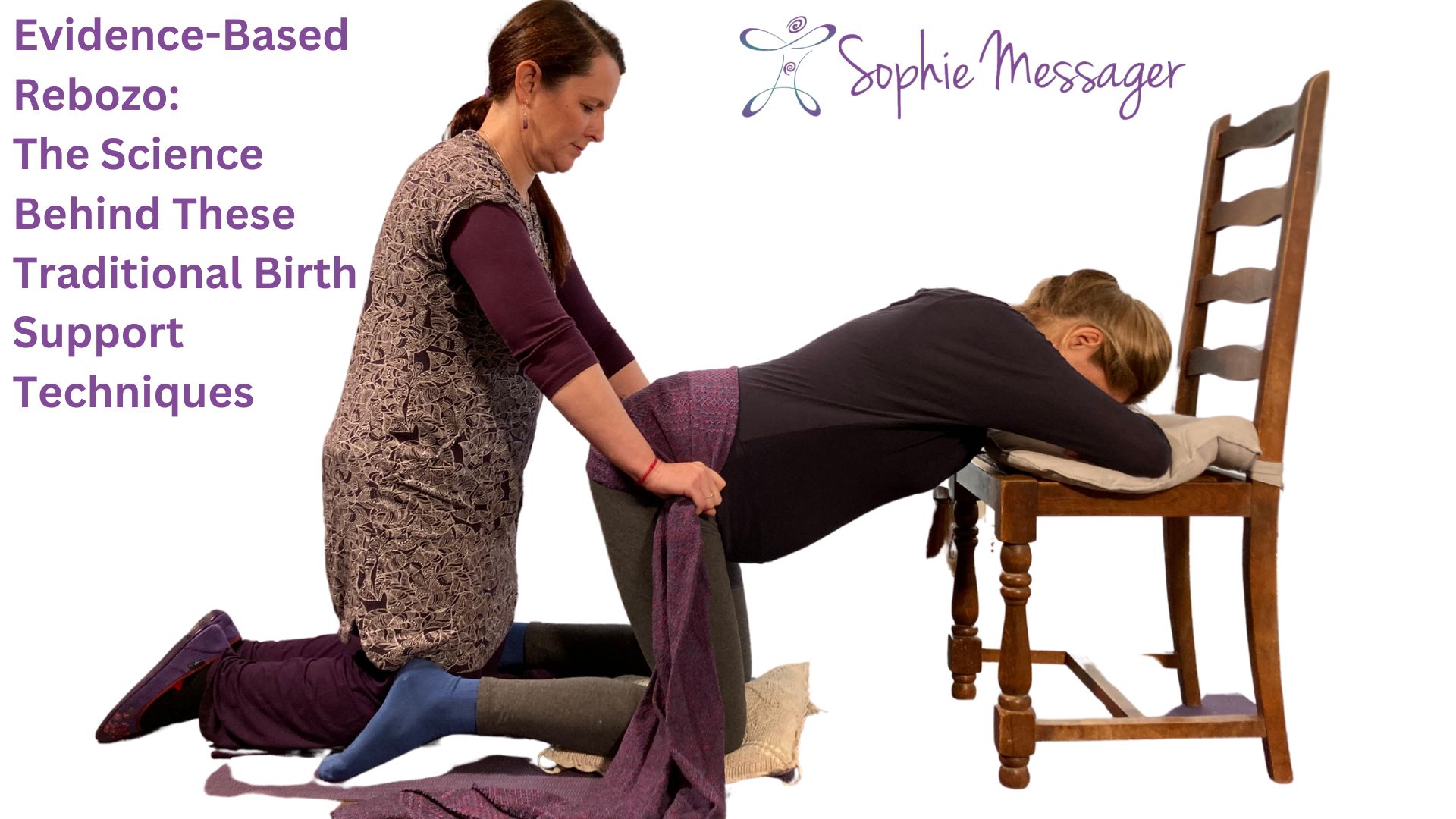
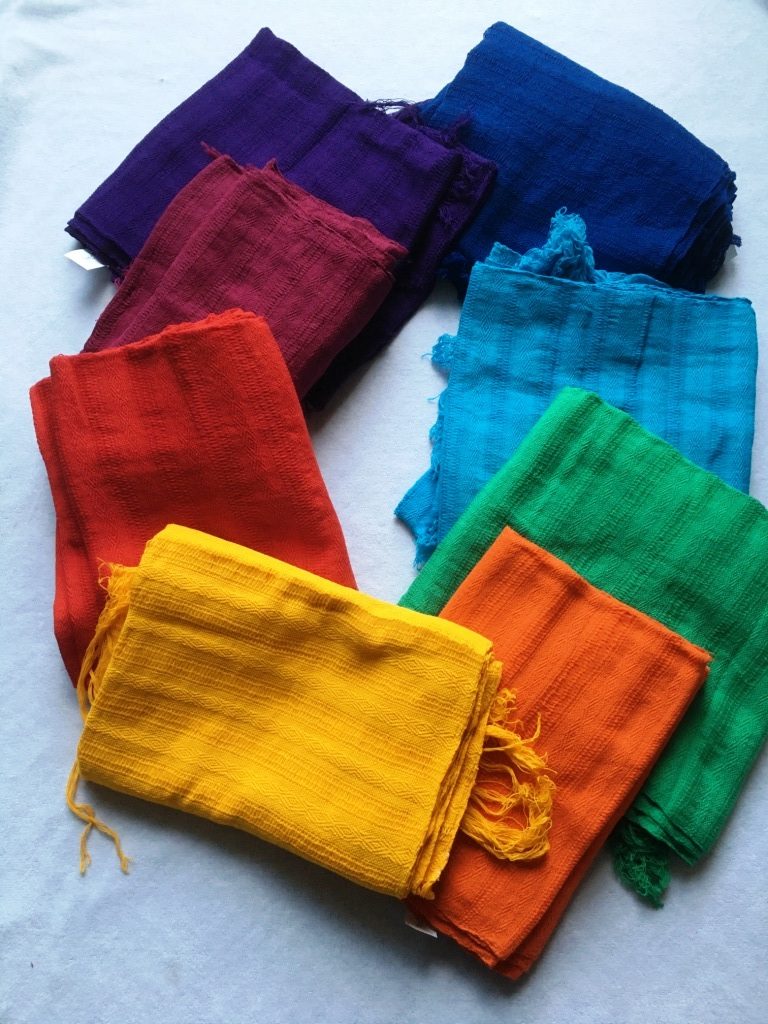
 When I worked as a doula, I used to gift a rebozo to my clients as part of my doula package, this way I knew they were more likely to become familiar with it and use it, plus it would make a lovely thing to keep afterwards. I would teach the partner a bunch of support and relaxation techniques, as well as show the mother how to wrap her belly and hips. A standard length (2m) works well for most people. I once supported a petite pregnant woman to wrap her hips, and I brought an long 2.5m instead of a 2 m one by mistake, and there was so much fabric around her hips when we practiced wrapping, making it feel cumbersome, so I brought her a shorter one at the next visit. However if the woman or her partner is tall then a longer rebozo might be more comfortable to use.
When I worked as a doula, I used to gift a rebozo to my clients as part of my doula package, this way I knew they were more likely to become familiar with it and use it, plus it would make a lovely thing to keep afterwards. I would teach the partner a bunch of support and relaxation techniques, as well as show the mother how to wrap her belly and hips. A standard length (2m) works well for most people. I once supported a petite pregnant woman to wrap her hips, and I brought an long 2.5m instead of a 2 m one by mistake, and there was so much fabric around her hips when we practiced wrapping, making it feel cumbersome, so I brought her a shorter one at the next visit. However if the woman or her partner is tall then a longer rebozo might be more comfortable to use. If you are tall (over 5ft6, 1.67m) and you want to use your rebozo to do floor techniques (for example, to rock someone’s hips whilst they lie on the floor), then with a 2 m length you will need to bend forward as you work, which can be uncomfortable. A longer length (2.5m) might work better for you. Similarly, if the person you are supporting is very curvy, a short rebozo might not be long enough to cup the hips comfortably. Much of this is also down to personal preference and experience.
If you are tall (over 5ft6, 1.67m) and you want to use your rebozo to do floor techniques (for example, to rock someone’s hips whilst they lie on the floor), then with a 2 m length you will need to bend forward as you work, which can be uncomfortable. A longer length (2.5m) might work better for you. Similarly, if the person you are supporting is very curvy, a short rebozo might not be long enough to cup the hips comfortably. Much of this is also down to personal preference and experience. Open weave rebozos lend themselves very well to wrapping. The open weave means that they cup the body really closely, which is great for rocking and massage. When I trained with Mexican midwife Naoli Vinaver, she favoured these as well. They are also very grippy which means they stay tucked when wrapped around the body. They are my favourite rebozo for closing the bones. They are also thinner and pack smaller. The open weave can make them prone to pulls, so they are more fragile than closed weave rebozos, but thread pulls are easily pulled back into the weave by tugging on the fabric. For closing the bones I use 2m ones for the head, ribs, legs and feet, and 2.5 m ones for the shoulders and hips as they are the widest part of the body.
Open weave rebozos lend themselves very well to wrapping. The open weave means that they cup the body really closely, which is great for rocking and massage. When I trained with Mexican midwife Naoli Vinaver, she favoured these as well. They are also very grippy which means they stay tucked when wrapped around the body. They are my favourite rebozo for closing the bones. They are also thinner and pack smaller. The open weave can make them prone to pulls, so they are more fragile than closed weave rebozos, but thread pulls are easily pulled back into the weave by tugging on the fabric. For closing the bones I use 2m ones for the head, ribs, legs and feet, and 2.5 m ones for the shoulders and hips as they are the widest part of the body. Closed weave rebozos are both beautiful, grippy and sturdy. Most of them are soft straight away (though depending on the weaver some may need more than a wash and some use to soften the fabric, a bit like with a brand new babywearing woven wrap), and the closed weave makes them less prone to pulls and broken threads. They are slightly thicker than open weave rebozos. They are an all round versatile sturdy rebozo, and they make a good baby carrier too (here is a bunch of
Closed weave rebozos are both beautiful, grippy and sturdy. Most of them are soft straight away (though depending on the weaver some may need more than a wash and some use to soften the fabric, a bit like with a brand new babywearing woven wrap), and the closed weave makes them less prone to pulls and broken threads. They are slightly thicker than open weave rebozos. They are an all round versatile sturdy rebozo, and they make a good baby carrier too (here is a bunch of 
 Why does wrapping helps?
Why does wrapping helps? I had ever heard of rebozo or using the shawls to wrap your hips and thought that anything was worth a try as I am in such horrendous pain. Since using the wrap I have been able to do shopping and walk around without crying in pain, it makes a huge difference, so easy to use, looks pretty and I love that I can use it during labour and after as a sling! Hannah
I had ever heard of rebozo or using the shawls to wrap your hips and thought that anything was worth a try as I am in such horrendous pain. Since using the wrap I have been able to do shopping and walk around without crying in pain, it makes a huge difference, so easy to use, looks pretty and I love that I can use it during labour and after as a sling! Hannah My
My  What can you use to wrap your hips and belly?
What can you use to wrap your hips and belly?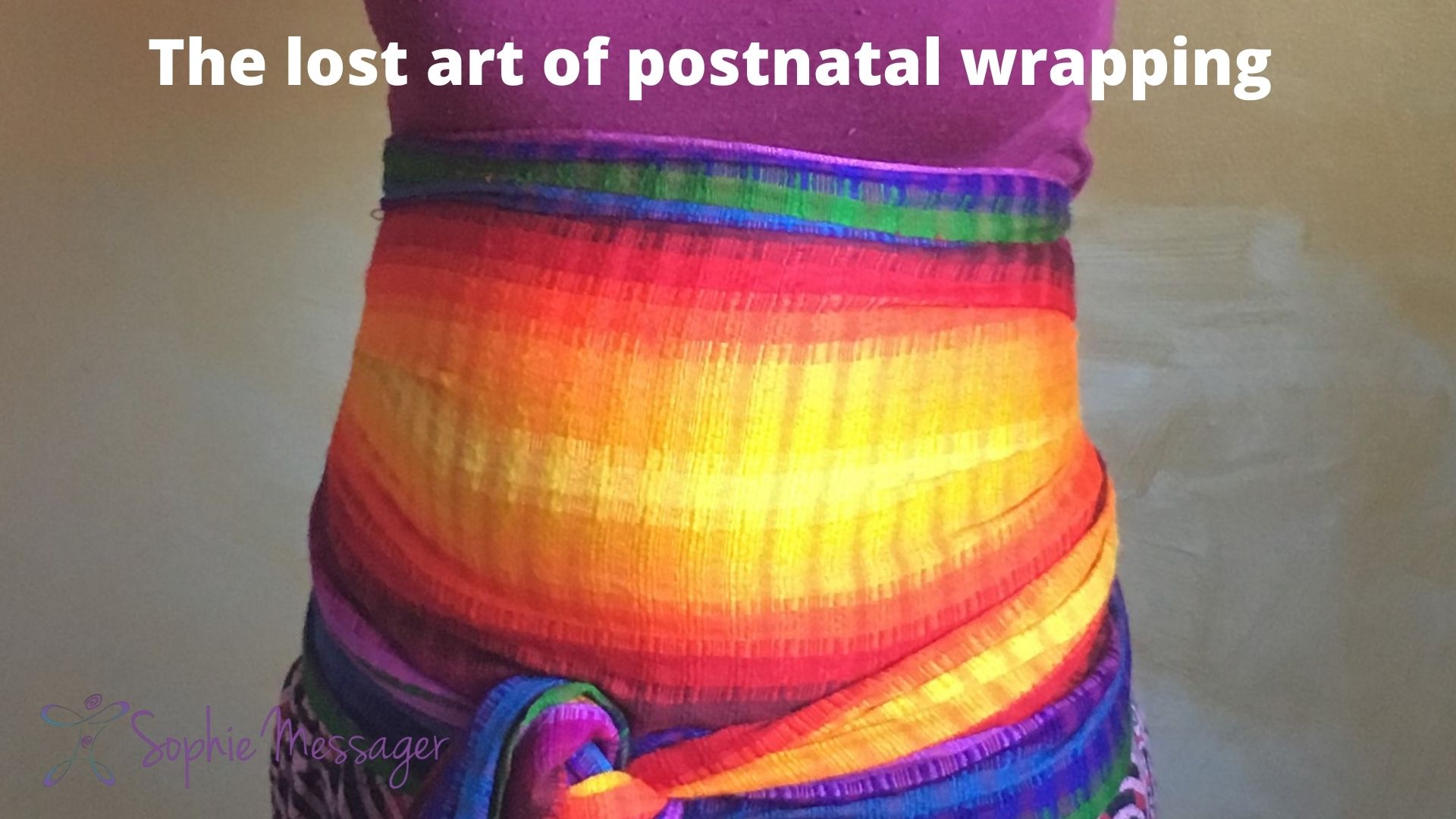
 New mothers are also open physically, emotionally and spiritually, and therefore the wrapping is part of the nurturing support to bring them back to their centre. On a simple physical level wrapping provides support to unstable joints and muscles. It also provides comfort and warmth. On an emotional level it brings us back to our bodies and provides a sense of being contained. On a spiritual level it feels containing and helps us come back to ourselves.
New mothers are also open physically, emotionally and spiritually, and therefore the wrapping is part of the nurturing support to bring them back to their centre. On a simple physical level wrapping provides support to unstable joints and muscles. It also provides comfort and warmth. On an emotional level it brings us back to our bodies and provides a sense of being contained. On a spiritual level it feels containing and helps us come back to ourselves. I see postpartum wrapping as a source of comfort, support and warmth. Done in accordance with the mother’s comfort and preferences, it can feel very good indeed.
I see postpartum wrapping as a source of comfort, support and warmth. Done in accordance with the mother’s comfort and preferences, it can feel very good indeed. With a very long, narrow cloth (about 15cm wide and 7 m long), you can do the Bengkung style binding, which goes from the hips to the ribs. Here is a video
With a very long, narrow cloth (about 15cm wide and 7 m long), you can do the Bengkung style binding, which goes from the hips to the ribs. Here is a video  How to choose the right way to wrap/bind for you?
How to choose the right way to wrap/bind for you?
